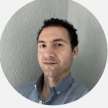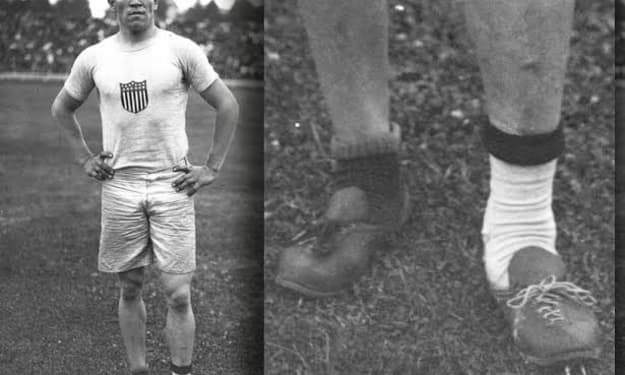The Controversial, Best-Selling Self-Help Book You’ve Never Heard Of
And what it says about changing your life

From blogs to books, podcasts to talk shows, lectures to retreats, there’s no shortage of self-help gurus advising us how to improve our lives.
Once shelved in small dusty bookstore corners; self-help expanded to become a stand-alone, expansive industry, accounting for $11 Billion in revenue last year alone.
Self-help became nuanced and multifaceted to include seminars, retreats, and numerous books topping bestseller lists in any given year. Authors in the genre expanded books into lectures, team building or career and coaching services.
Among the most successful authors and titles include; Richard Carlson’s Don’t Sweat The Small Stuff, Seven Habits of Highly Effective People by Steven Covey, and Spencer Johnson’s Who Moved My Cheese, all of which have sold 20 to 25 million copies since being released. The aforementioned authors also became fixtures on the corporate speaking and lecture circuits.
While immensely successful, these authors and titles pale in comparison to a best-seller you may have never heard of.
A single book that's sold 50 million copies and still going strong. Published in 1984, it remains an Amazon top 10 best seller in subcategories including healing, love and loss, as well as death and grief.
Louise Lynn Hay, author, public speaker, and founder of Hay House, the publisher responsible for her best selling title; You Can Heal Your Life. You’d be hard-pressed to meet Hay, attend her book tour, or lecture; she passed away in 2017.
Some of Hay’s beliefs would be controversial now, but in the 80s, nearly all her writing was called into question by scientists in general and the medical community specifically.
Louise Lynn Hay
Before the likes of Eckhart Tolle (A New Earth) or Rhonda Byrne (The Secret), Louise Lynn Hay was a New York Times best-selling author, a fixture on the talk show circuit, an advocate for marginalized patient groups, and a strong presence on self-help bookshelves across the country.
Prior to becoming a best selling author and sought after public speaker, Hay had a traumatic childhood. Born Helen Vera Lunney in 1926 Los Angeles, she would later tell The New York Times of a rape by her neighbor around the age of five, dropping out of high school at 15, becoming pregnant and giving up her baby girl for adoption when she was 16.
Lunney moved to Chicago, then New York when she was 24, changed her first name, and became a successful fashion model. At 28, she married Andrew Hay, but he would leave her for another woman after 14 years.
It was around this time Louise Hay found the First Church of Religious Science in NYC. A church steeped in The New Thought Movement and Christian Science. Hay’s religious beliefs would shape her writing, contributing heavily to her books and publishing empire.
It was around this time, in her early 50s, Hay’s writing flourished, and she was diagnosed with “incurable” cervical cancer.
Her approach to both her illness and writing would bring notoriety, pushing the New Thought movement and Christian science further into mainstream circles.
The pamphlet that became an all-time best-seller
You Can Heal Your Life, the book, began as “Heal Your Body” the pamphlet.
Written in 1976, the pamphlet included a list of physical ailments and their likely metaphysical cause. For example, a cause for Alzheimer’s disease, according to Hay, was a desire to leave the planet, or an inability to face life. Another example; rectal bleeding is caused by anger or frustration.
Hay believed her childhood abuse and trauma led or contributed to her cervical cancer diagnosis. Through forgiveness, therapy, nutrition, reflexology, occasional colonic enemas, and avoiding conventional medicine, she was able to heal herself from what she was told to be an incurable illness.
These conclusions and her subsequent treatment were a direct result of deep belief in Christian Science and The New Thought Movement.
Christian Science, as a religion and subsequent church, was founded by Mary Baker Eddy in New England 1879. In her seminal book Science and Health Eddy claimed that sickness can be healed by prayer.
Core beliefs of The New Thought Movement include; God as universal intelligence, all people are divine, their mental state manifests their experience, loving unconditionally and healing one another is the highest spiritual principle.
Hay would speak extensively on these topics and conducted support groups for various neglected patient groups. Hay wrote and published You Can Heal Your Body in 1984, which expanded the original pamphlet to include affirmations, eliminating negative thoughts, incorporating positive thinking.
Her work with AIDS patients would lead to appearances on The Oprah Winfrey Show and Donahue, in March of 1988, immediately landing her on the New York Times best-seller list.
The power of positive thinking
The notion of positive thoughts, beliefs, and love being transformative is nothing new or earth-shattering.
You’ve likely read countless versions of the same story before.
Hay became controversial for her beliefs in metaphysical origins for disease, prayer healing a range of illnesses, and physical manifestations of negative thoughts or repressed trauma leads to disease within the body.
To claim cancer, as Hay did, was caused by repressed trauma, would be extremely controversial by today’s standards. In a way though, Hay was ahead of her time. Keep in mind, during the late eighties, believing stress, worrying, or negative thoughts contributed to muscle tension or headaches, an accepted belief now, was contentious then.
That our mental state dictates our physical state, may still be controversial, however, there is growing evidence on how negative thoughts or stress can contribute to certain ailments.
Self-help remains focused on the notion of minimizing negativity, amplifying positive thoughts and overall attitudes, while striving for methods, affirmations, and activities to bring about beneficial change within ourselves.
Look at it this way, having a positive attitude, avoiding negative thoughts and worrying less can’t hurt you, and the first rule of medicine is, “do no harm”.
Simply put, be positive and love others, it definitely can’t hurt.
About the Creator
Bashar Salame
Chiropractor/Nutritionist/Published Author/Triathlete
Restoring health→ Enhancing Life
Beirut Born→ Detroit Bred
https://twitter.com/Detroitchiro
https://basharsalame.medium.com/
Enjoyed the story? Support the Creator.
Subscribe for free to receive all their stories in your feed. You could also pledge your support or give them a one-off tip, letting them know you appreciate their work.






Comments
There are no comments for this story
Be the first to respond and start the conversation.